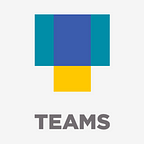How to Build and Nurture a Creative and yet Process-Driven Design Culture
Why is this so important?
As you develop processes and strategies for your customers, you should always question your own approaches and continuously develop them as well. Living a culture of innovation means that you, as a design agency or department, should involve employees more. Make them a part of it! Giving them a voice will motivate them and deliver better project results.
An important goal of leadership is to create a thriving culture in which everyone is aligned to the same vision. But this can be difficult to create because the staff’s attention is on their individual challenges of the day-to-day projects under ever-tighter deadlines. Not a secret, casual connections between employees can be encouraged through the right environment and layout. It will grow from there. This starts with a place for employees to gather, such as putting the coffee machine in a central spot in the office space. Or providing a recreational space for employees to take a break, like adding the foosball table.
Linking the internal design process to the social culture and the heart of the office also maintains a high level of creativity while delivering consistent quality. Here are practical ways to connect your culture with your process.
Step One: Put the employees at the center of success
It’s worth remembering that the company is dependent on its workforce and must act emphatically. So empowering the employees themselves to co-create the internal process strategy will create a shared vision. It should lead to great efficiencies too, as they know the weak points in the process better than anyone else. Involve them in Feedback rounds and let them contribute to the process development.
Open communication is an essential aspect within an agency or design department and leads to improved clarity on project goals. Was all the information attained? Where are we coming from? What are the current tasks and where do we want to go? Make sure your employees feel that they are part of it and make them feel heard. This will help them be a part of it, talk about it, sell it, and of course use it.
Step Two: Make your process clear and easy to follow and visible
The process determines the quality of our deliverables.
Every agency or design department has strategies and processes to guide clients throughout a project. These well laid out plans are often invisible to the staff, which can lead to inconsistencies and missing information.
One underestimates how many costs arise from unnecessary loops in the process. With a clear process and open creative culture, these can be significantly reduced. This reduces costs and increases efficiency for the agency and thus also for the customer.
The defined sequence of phases is essential in communication with international studios. This allows tools and methods to be easily exchanged and the knowledge pool to be standardized.
In order to avoid this situation, the process should be aligned and made visible and well understood by the whole team. Something as simple as hanging a physical poster, or an easily accessible digital dashboard to illustrate the process is one way to make this possible. There are so many tools out there to map your process to a digital infrastructure.
Having a tool/poster that tracks and communicates your progress, helps everyone to stay very clear on how far the project is, identify any gaps and ramp-up to the next steps.
Step Three: Create a process with built-in feedback loops
Iterative loops should always be planned, to keep the benefits of an agile process during any given project. Design has the most significant influence when it is able to act and not only react. This also allows development cycles to become shorter and new business models to be implemented more quickly. For example, you could catch up with your whole team in weekly meet-ups to update everyone on what’s going on with the team members. Always be open to feedback!
We believe that design has the greatest influence when it acts and not just reacts. This requires planning in advance with all project participants and forming strategies to define expectations.
Ready to take the next step?
A culture-driven process reduces fears and uncertainties, confusion, and creates clarity. It makes results measurable and provides criteria for checking the goals achieved. Market and expectations are continually evolving, and so should the processes within design agencies and design departments.
“Culture eats Strategy for breakfast,” says the manager, consultant, and author Peter Drucker. That’s why you have to take a step back and find a sweet spot in synchronizing design structures and processes.
The global efficiency of TEAMS is only possible through our steady updates and unified methods and tools. TEAMS speaks one language worldwide (with regional accents).
